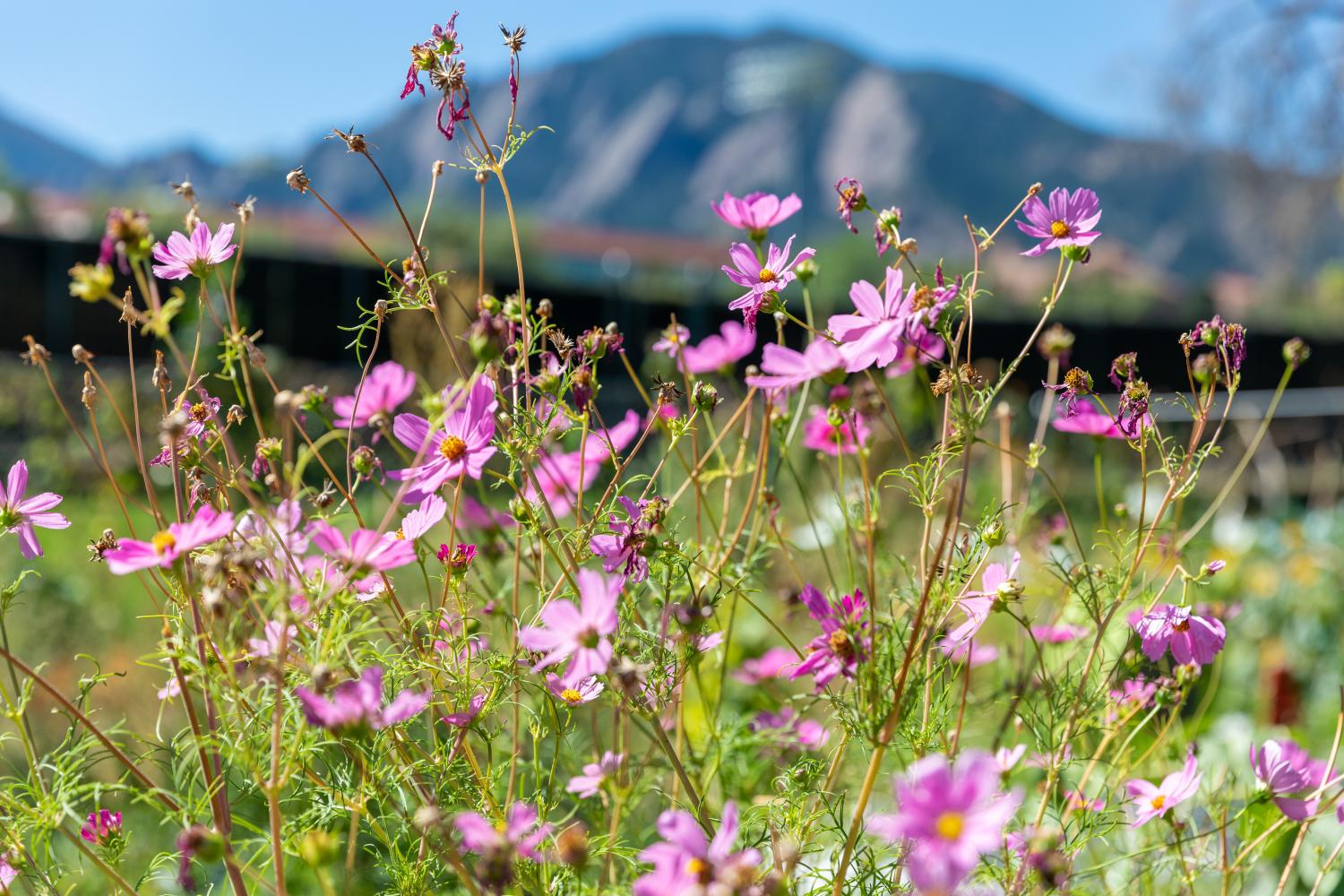Campus Pollinator Garden
In the summer of 2014, CU Boulder installed the University’s first landscape designed for and dedicated to pollinators. The landscape consists of barberry, currant, monarda, spirea, rudbeckia, yarrow, gooseberry, catmint and lavender - all of which should tolerate and beautify the roadside conditions. The first phase was installed along Broadway and the bike path from 18th Street to the Regent bus stop. In 2015, the second phase of the campus pollinator sanctuary landscape was installed at the east entrance of main campus, located on the north side of the new campus recycling building and west of the 28th Street underpass. Sustainable CU funded the initiative.
These two areas total 10,000 square feet and demonstrate an urban pollinator garden that provides pollinators consistent forage throughout the spring, summer and fall seasons. The garden also gives the community beautiful pedestrian entrance points to campus and educates on the importance of pollinators.
The Environmental Center has supported campus operational initiatives to reduce water and pesticide use. This project supports these sustainability goals and creates a habitat for declining pollinator species. The phase 1 area on Broadway was selected to convert an “unmanageable” landscape area from turf to heat-tolerant and less water-intensive perennials. It was unmanageable in that narrow strips of grass are more challenging to maintain by campus grounds staff and can become more laden with undesirable plants, creating pressure to apply herbicides. Phase 2 was an opportunity to convert an unfunded landscaping area impacted by construction.
The pollinator landscape follows the following principles for pollinators:
- It uses a wide variety of plants that bloom from early spring into late fall.
- The plants are arranged in dense clumps rather than many single species. This helps pollinators find and use them.
- The plants are either native species or are well-suited to the Front Range climate. Natives are adapted to our local climate, soil and native pollinators.
- No pesticides are applied to the landscape.
- As much as possible, plants will be sourced to be free of neonicotinoids, which are a relatively new class of systemic insecticides that potentially pose risk to pollinators.



